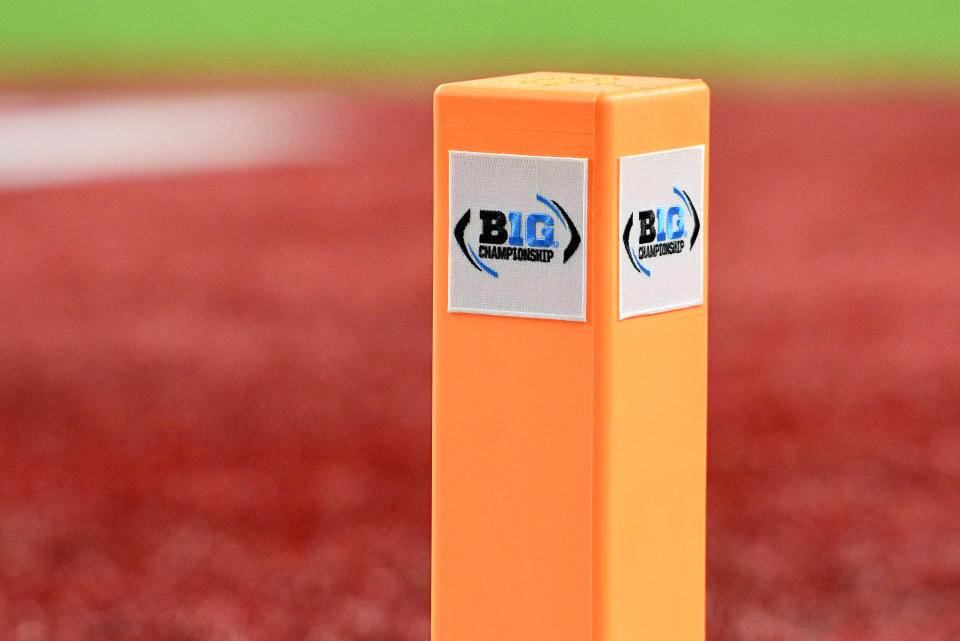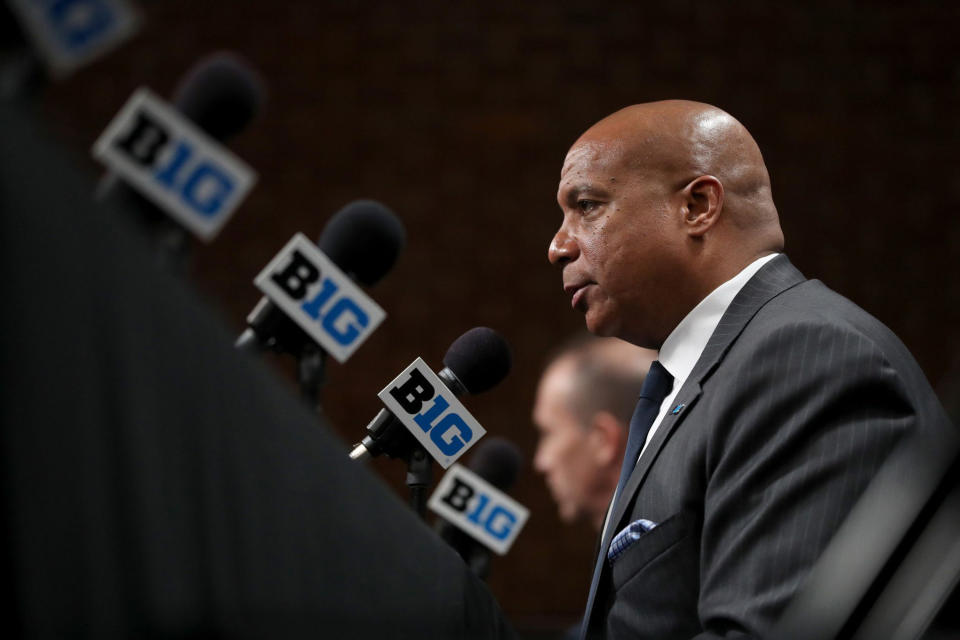After weeks of tumult, Big Ten mulling about-face on playing fall football
The Big Ten’s summer has been filled with protesting parents, phantom voting controversies and a conference office that’s struggled to message its actions. There have been angry coaches, outspoken presidents and the looming specter of White House involvement.
As the Big Ten coaches and teams watched from home on the first full Saturday of a college football season, the dark weeks for the conference were finally given a ray of hope.
In the next 48 hours, we should know whether or not the Big Ten is able to salvage a conventional football season in 2020. What once seemed to be both a Hail Mary pass and a message board fever dream has somehow transformed to something within the realm of reality.
The Big Ten’s Council of Presidents and Chancellors are meeting on Sunday afternoon to discuss what was once unthinkable – reversing their decision and having the league play college football this fall. This is not a coronation, as there are still a slew of unanswered questions and presidents who need convincing.
But the fact that the Big Ten’s Council of Presidents and Chancellors are meeting on Sunday afternoon to discuss fall football is a stark reversal for the league. Sources told Yahoo Sports on Saturday that the league’s steering committee of eight presidents and chancellors met and heard a presentation from the medical committee of the return to competition task force. Yes, that’s a mouthful.
But those eight presidents heard enough positive medical news, including the promise of daily rapid testing, that they want the same presentation to be given to all 14 of the league’s presidents and chancellors on Sunday. While a vote is not certain to happen on Sunday, sources said that the league will vote in some fashion on the sport coming back within the next 48 hours.

What could Big Ten football in the fall look like? That’s still not clear. The earliest possible date, according to sources, would be Oct. 17. But there are other potential start dates as well, including Oct. 24.
The Oct. 17 start date would theoretically allow the Big Ten to participate in the College Football Playoff. It would allow an eight-game football season, which would include a bye week, that culminates on Dec. 19 with the Big Ten championship game. The league’s television partners have long been onboard with the Big Ten playing earlier to allow more inventory. And the Big Ten title game is a powerful motivator, as its one of the league’s most valuable pieces of inventory.
Starting on Oct. 17 isn’t the only available date, of course. But for those coaches and athletic directors set on playing, that’s the date that symbolizes some normalcy and allows the league to keep competitive footing with the rest of the leagues that are playing.
This is where we must layer the uncertain reality with that flurry of optimism. No one really knows what will happen Sunday. There’s a time-tested and inherent uncertainty when a group of college presidents get together. Considering how polarizing and politicized this issue has become, no outcome would really resonate a surprise.
For all the fan pleading and coach lobbying, there are also some gloomy realities. Two of the programs in the league – Maryland and Wisconsin – are on pause. And there have been a spree of ugly campus headlines that the presidents have to make this decision amid, including Michigan State asking all of its student body to quarantine after more than 300 of them ended up testing positive for COVID-19, many of which came from parties near campus.
(Wisconsin students have also been asked to “restrict their movement” in order to flatten the curve in Madison, according to news reports.)
Wisconsin athletic director Barry Alvarez did add a dash of optimism on Saturday night when he told Yahoo Sports that the Badgers, who will be on pause until Sept. 24, would be ready if and when the Big Ten decides to start the season. “[Coach Paul Chryst] and I are on the same page on this,” Alvarez said. “We can have our guys ready. We could have a team ready in three weeks. We feel comfortable with that.”
The biggest visceral pull toward the Big Ten potentially playing unfolded on television from noon until well past midnight on Saturday. There were nearly 20 games, including Notre Dame vs. Duke in the Big Ten footprint, which played on without noticeable incident. With college football being played for its third consecutive week, there are empirical examples of the ability to play the game safely.

So what will be different for the Big Ten presidents when they gather this week compared to nearly six weeks ago? After all, the Big Ten presidents voted 11-3 back then to postpone the season and not play in the fall.
Here’s the expected fundamental tension that the Big Ten’s return to competition task force is going to need to address with the league’s 14 presidents and chancellors in their call on Sunday. They’re going to have to show how much has changed medically since the Big Ten announced it would be postponing the fall season on Aug. 11.
Much of the onus of showing what’s different will be on Ohio State head team physician Dr. Jim Borchers. He’s on the return to competition task force as the medical co-chair. When the Big Ten initially canceled, there were questions about testing, contact tracing and uncertainty surrounding myocarditis. There were also questions as to whether COVID-19 could be spread through football practice or playing games.
Six weeks later, the Big Ten appears poised to have some type of rapid daily testing agreements. That could help potentially mitigate contact tracing concerns. Eight of the presidents have already heard what Dr. Borchers had to say on Saturday. The additional six presidents, all of whom voted to postpone in August, are an important new audience.
Those who’ve been on Big Ten Zoom calls recently have been impressed by Dr. Borchers.
“It’s a convincing argument,” said a Big Ten source. “The testing piece and the way that the testing negates contact tracing. Our big problem right now is that we have a minimum four or five schools that are really prohibited through contact tracing.”
An air of uncertainty rippled through the league on Saturday night. But no one could have envisioned the league getting to this point of a potential vote two weeks ago.
How it will unfold is up to presidential opinion. The presidents need 60 percent vote on a final decision. Predicting an outcome is tricky, as presidents are a notoriously fickle group to handicap.
But the fact that the Big Ten has hope for playing this fall already marks the most stunning comeback of the 2020 football season.
More from Yahoo Sports:

 Yahoo Sports
Yahoo Sports 